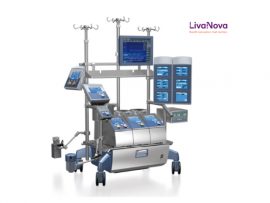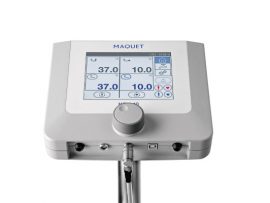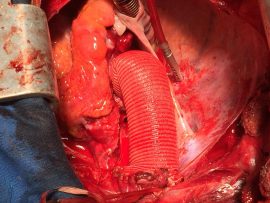Abstract Objectives: This study aimed to measure the incidence of postoperative delirium (POD) after aortic arch surgery with hypothermic circulatory arrest (HCA), compare it to cardiac surgeries not requiring HCA, and..
Read MoreAbstract OBJECTIVES The optimal core temperature for hypothermic circulatory arrest during aortic arch surgery remains contentious. This study aims to evaluate patient outcomes under various temperatures within a large single-centre..
Read MoreAbstract It is believed that a lower temperature setting of hypothermic circulatory arrest (HCA) in thoracic aortic surgery causes coagulopathy, resulting in excessive bleeding. However, experimental studies that eliminate clinical..
Read MoreAbstract BACKGROUND: Deep hypothermia has been the standard for hypothermic circulatory arrest (HCA) during aortic arch surgery. However, centers worldwide have shifted toward lesser hypothermia with antegrade cerebral perfusion. This..
Read MoreAbstract Diseases affecting the aortic arch often require surgical intervention. Hypothermic circulatory arrest (HCA) enables a safe approach during open aortic arch surgeries. Additionally, HCA provides neuroprotection by reducing cerebral..
Read MoreAbstract OBJECTIVES We analyzed the temperature in proximal aortic repair with moderate hypothermic circulatory arrest (HCA) and evaluated the effect of the cooling status on postoperative outcomes. METHODS A total..
Read MoreAbstract Hypothermic circulatory arrest is commonly used during aortic arch surgery. However, it is associated with high risk of visceral organ and lower limb ischemia. There may be advantages to..
Read MoreAbstract OBJECTIVES We analyzed the temperature in proximal aortic repair with moderate hypothermic circulatory arrest (HCA) and evaluated the effect of the cooling status on postoperative outcomes. METHODS A..
Read MoreAbstract Hypothermic circulatory arrest (HCA) is an essential procedure during aortic surgery to protect organs; however, hypothermia is believed to cause coagulopathy, which is a major fatal complication. This study..
Read MoreAbstract Anterograde or retrograde cerebral perfusion can protect the brain from ischemic injury during hypothermic circulatory arrest (HCA), but neither type of perfusion provides blood flow to the abdominal viscera...
Read MoreAbstract Background Selective antegrade cerebral perfusion (SACP) has become our preferred method for cerebral protection during open arch cases. While the initial approach involved sewing a graft to the innominate..
Read MoreAbstract Objective Deep hypothermic circulatory arrest (DHCA) in aortic surgery is associated with morbidity and mortality despite evolving strategies. With the advent of antegrade cerebral perfusion (ACP), moderate hypothermic circulatory..
Read MoreAbstract Objective We aimed to determine the effects of selective antegrade compared with other perfusion strategies on indices of cerebral blood flow, oxygenation, cellular stress, and mitochondrial function. Methods One-week-old piglets..
Read MoreAbstract Aims The aim of this study was to document the postoperative outcomes of patients who underwent hypothermic circulatory arrest (HCA), the evolution of HCA management over time and to identify the..
Read MoreAbstract We recently documented that cardiopulmonary resuscitation (CPR) generates the same level of cardiac output (CO) and mean arterial pressure (MAP) during both normothermia (38 °C) and hypothermia (27 °C). Furthermore, continuous..
Read MoreAbstract Backgroundː Impairment of cerebral autoregulation (CA) has been observed in patients undergoing cardiopulmonary bypass (CPB), but little is known about its occurrence and associations with outcomes. The objective of this..
Read MoreAbstract Objective Stroke remains a potentially devastating complication of aortic arch intervention. The value of neurophysiologic intraoperative monitoring (NIOM) in the early identification of stroke is unclear. We evaluated the..
Read MoreAbstract CARDIAC SURGERY is inherently complex and is associated with a high risk of perioperative bleeding. As such, it is responsible for a disproportionate percentage of annual blood product usage..
Read MoreAbstract Objective To evaluate the effect of autologous whole blood (AWB) collection on intraoperative/postoperative allogeneic blood transfusion rate in complex aortic surgery with hypothermic circulatory arrest. Methods This retrospective study..
Read MoreAbstract Introduction: Intestinal fatty acid-binding protein (I-FABP) is increasingly employed as a highly specific marker of intestinal necrosis. However, the value of this marker associated with cardiovascular surgery with hypothermic..
Read MoreAbstract Aim Hypothermia and selective brain perfusion is used for brain protection during an acute type A aortic dissection (ATAAD) correction. We compared the outcomes between antegrade and retrograde cerebral..
Read MoreAbstract Background We created an estimation model for hypothermic circulatory arrest time and analyzed the risk factors for major adverse outcomes in total arch replacement. Methods This study involved 272..
Read MoreHYPOTHERMIC CIRCULATORY arrest combined with selective cerebral perfusion commonly is employed to permit surgical repair of the ascending and transverse aorta. A variety of perfusion techniques are employed, including retrograde..
Read More








